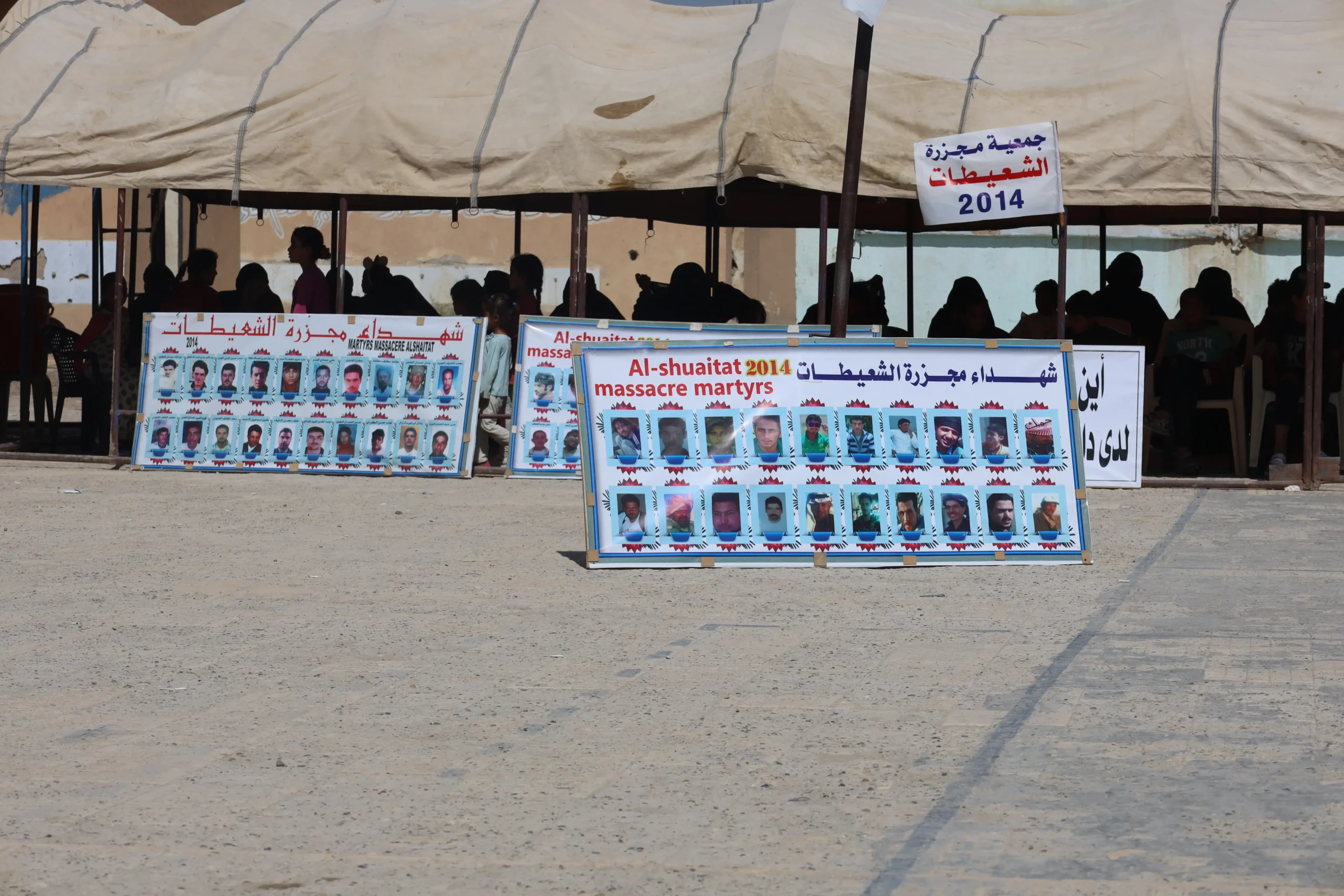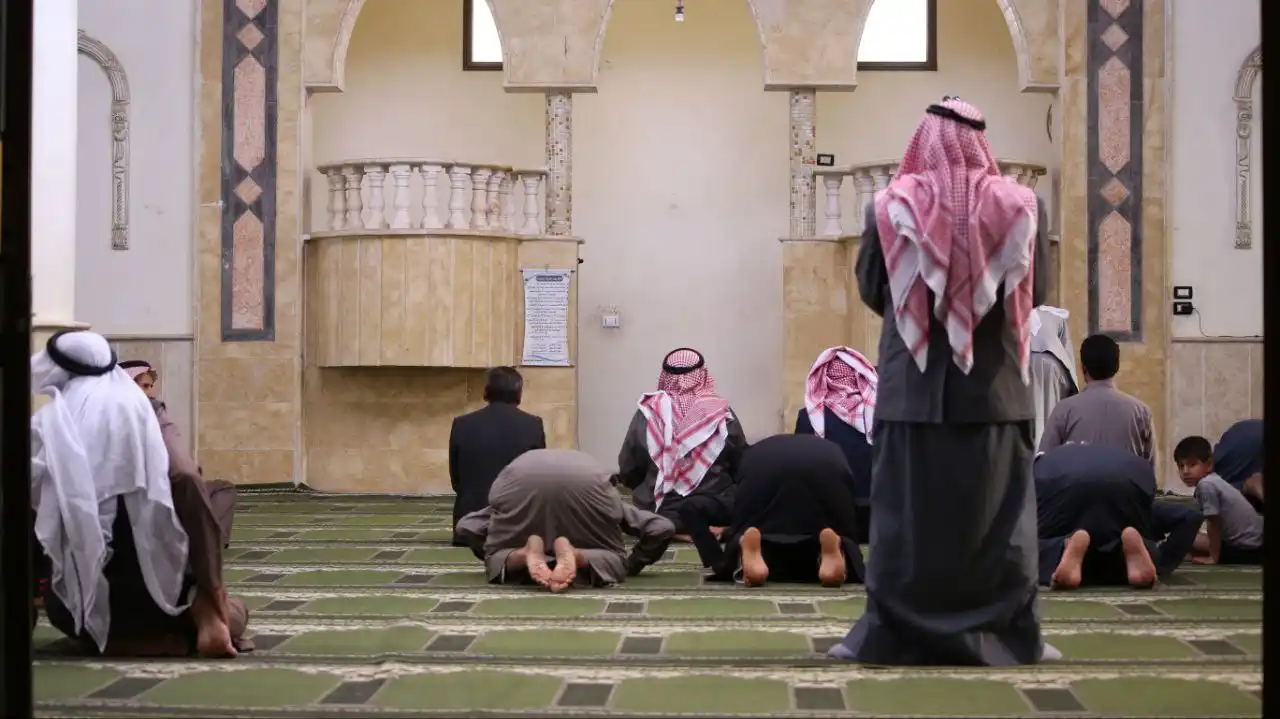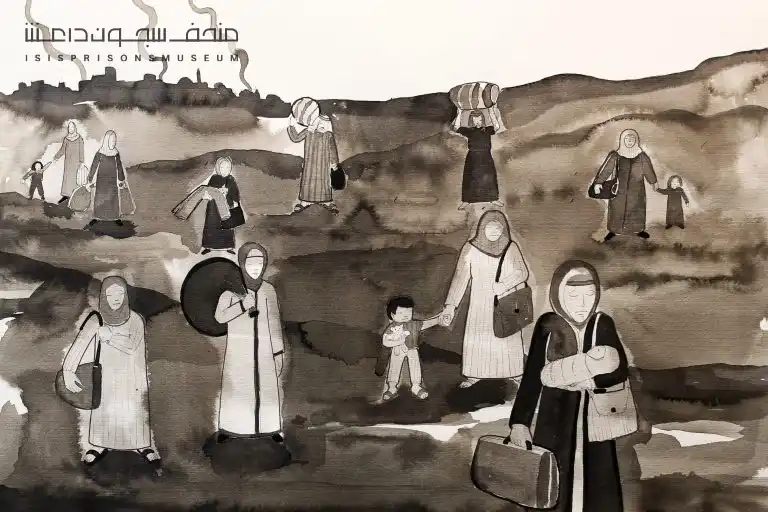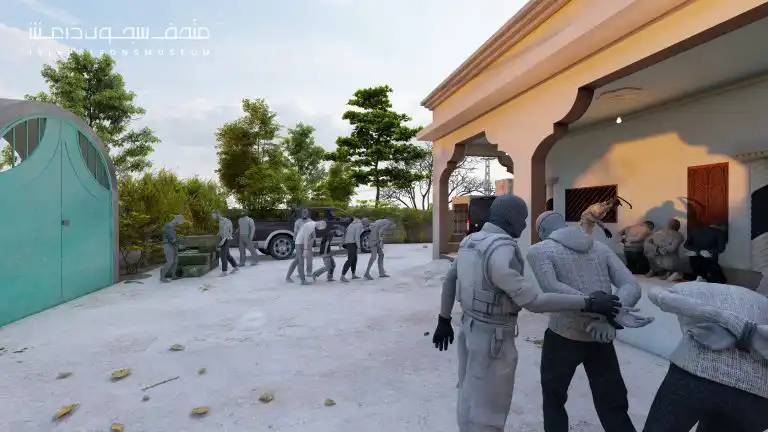The Massacre
The 2014 Shaitat Massacre
In the summer of 2014, Deir ez-Zor province witnessed the worst atrocity perpetrated in Syria by the so-called Islamic State (ISIS). The massacre unfolded when the people of the Shaitat clan resisted the group’s presence, its extremist ideology, and its encroachment on both their public and private lives. This defiance led to a brutal war, legitimized by ISIS and carried out by its fighters using violent and varied methods. The result was over 800 victims from the Shaitat clan, dozens of mass graves scattered across their land, and hundreds of families left in mourning—orphans and widows bearing the weight of loss.
The Broader Context of Violence
The uniqueness of the Shaitat massacre is determined by its specific circumstances, yet it emerges from a larger context of violence in Deir ez-Zor in particular and Syria in general. ISIS arrived suddenly on the scene in Deir ez-Zor early in 2014, and immediately clashed with the ideologically diverse Syrian opposition factions. Fierce battles raged throughout the province for more than six months, but eventually, ISIS came out on top.
Documenting the Tragedy
The ISIS Prisons Museum, in collaboration with the Association of Families of Shaitat Martyrs, has published an extensive study titled The Shaitat Massacre: Documenting the Events and Reshaping the Narrative, which aims to re-document and reshape the narrative of the Shaitat Massacre by examining the political and military context of ISIS control over Deir ez-Zor province, ultimately resulting in the subjugation of the Shaitat towns. This culminated in an initial agreement that recognized ISIS rule in the region. The study then shifts to examine the breaching of this agreement in July 2014, a central event that led to a battle with ISIS that lasted 12 days and ultimately resulted in the massacre.
Introduction
July 12, 2014
On July 12, 2014, ISIS declared full control over the Shaitat areas and gave its fighters a short deadline, until July 17, to surrender their weapons. The Shaitat towns experienced a brief period of uneasy calm, but within the first week, ISIS took its first steps to break the agreement it had signed with the military factions following previous clashes. It established a military headquarters in the municipal building of Kishkiyya.
July 30, 2014
On July 30, 2014, the military conflict reignited. An unorganized group of armed Shaitat men headed to the military headquarters ISIS had set up in the Kishkiyya municipality and engaged in a confrontation with the fighters there. The conflict escalated, and ISIS elements arrested 26 civilian employees of the Shaitat clan who had been employed at the Tanak oil field under ISIS’ initial control, as per the agreement. This incident would later be known in the oral memory of the Shaitat as “the Municipality Incident.”
ISIS justified the killing of anyone proven to be from the Shaitat clan. On the day of the Municipality Incident, ISIS issued a notorious fatwa declaring the entire Shaitat clan as “violators of the covenant and apostates from sharia rule,” declaring them a “resistant sect with force.” This fatwa issued against the clan stipulated that they were an apostate group that must be fought as infidels, even if they acknowledged Sharia law, and prohibited them from receiving any form of truce, protection, or ransom. The fatwa also allowed for the killing of Shaitat prisoners and the pursuit of fleeing clansmen.
July 31, 2014
This culminated in a military assault by ISIS which led to a battle lasting 12 days, starting on July 31, 2014, involving shelling, skirmishes, and retreats. On the eighth day, ISIS released images of the execution of the 26 oil field employees, who had been arrested on July 30, 2014. The men were shot and their throats were cut in an open desert area. During this time, the Shaitat villages were gradually emptied of their residents.
August 11, 2014
On August 11, 2014, as Shaitat forces withdrew, ISIS entered Kishkiyya and Abu Hamam, starting to comb and search the areas. In the following days, violent raids led by the Libyan Battar Battalion and local security groups targeted displaced people, especially in areas like Hajeen, Bahra, and Shafa, which had become the primary refuge due to their proximity to the Shaitat areas. The campaign ended with mass arbitrary arrests of hundreds of civilian men and youths, with no charges other than being members of the Shaitat clan. Field executions were carried out before many of the detainees reached the detention sites.
In the following weeks, arrests and raids intensified, accompanied by immediate killings and executions, particularly in schools converted by ISIS into temporary detention centers. Prisoners from nearby checkpoints, such as the Shafa checkpoint, were brought to these schools, where several executions of men and youths took place. Other checkpoints detained dozens of young men, leading to their execution in open areas not far from the site.
September 24, 2014
On September 24, 2014, a “final agreement” was reached after negotiations in Raqqa attended by a delegation sent by Abu Bakr al-Baghdadi and Shaitat elders representing the three towns, along with ISIS representatives from the Shaitat clan (Abu Ali al-Shaitati, Jaafar al-Khalifa). The meeting focused on the displaced people and finding a way to ensure their trouble-free return. The agreement included nine terms, the most important of which were the surrendering of weapons by fighters, allowing the residents to return under certain conditions, and the signing of documents of repentance by both the people and fighters.
October 2014
In early October 2014, following the cautious calm that spread after the agreement, news spread among the Shaitat about an “amnesty” from Abu Bakr al-Baghdadi allowing the tribe to return to their towns. The gradual return of the residents began, though they had suffered massive losses in lives and property and were once again subjected to the rules and authority of ISIS and its new round of arrests.
ISIS maintained its presence in the Shaitat areas until the summer of 2018. While mass killings decreased, individual executions and arrests continued. During these years, residents discovered mass graves in various areas containing the remains of those executed, slaughtered, or burned by ISIS fighters.
Context and Events
The study published on the ISIS Prisons Museum website includes detailed and extensive information explaining the military events that occurred in Deir ez-Zor and the Shaitat areas. It delves into the details of the conflict between the Shaitat clan and ISIS. Below is a chronological sequence and summary of the major events leading up to and surrounding the massacre.
Analyzing Victim Data
The Shaitat Victims’ Families Association documented cases from early January 2014 to August 15, 2021, spanning the rise of ISIS and its initial battles with other armed factions in the province, including the Shaitat factions, leading up to the massacre, and continuing until after the ISIS withdrawal from the region. The association counted at least 814 victims from the Shaitat clan killed during that period by ISIS, in various contexts.
Before the massacre
From the beginning of the survey on January 1, 2014 until the ‘Municipality Incident’ of July 30, 2014
The Shaitat Victims’ Families Association documented at least 44 names of those killed from the first clashes with ISIS in Deir ez-Zor province in January 2014 until the incident at the municipality building in Kishkiyya on July 30, 2014. Considering these dates, it is likely that the smallest proportion of those killed were civilians. The largest proportion were Shaitat combatants killed in the battles with ISIS. It is important to note that this number is what the association was able to document, but the actual count may well be higher, both for civilians and fighters.
During the Massacre
From the Municipality Incident until the return agreement/ amnesty of October 1, 2014
The massacre began on July 30, 2014, with the order to execute the fatwa against the Shaitat tribe and launch the battle. From then on, civilians faced arrests and random killings. This campaign continued at varying intensity until October 1, 2014, the date of the so-called ISIS amnesty. The amnesty followed an agreement between ISIS leaders and Shaitat elders to end arrests and set conditions for the displaced to return. The Shaitat Victims’ Families Association counted at least 558 victims during this peak killing period.
After the Massacre
From the return agreement/ amnesty of October 1, 2014 to the return of the last batch of displaced on September 17, 2015
The Shaitat Victims’ Families Association documented 648 victims from the battle’s start through displacement and the return of the displaced. At least 90 were killed between the agreement and the October 1, 2014, amnesty—meant to end killings—and September 17, 2015, when Abu Hammam’s last displaced residents returned. Due to limited data and the absence of battles, many victims were likely civilians executed by ISIS through various methods and charges.
From September 17, 2015 (the date of the return of the last batch of displaced) until the withdrawal of ISIS on January 25, 2018
Continued Attrition
During this period, the Shaitat Victims’ Families Association documented at least 86 victims, predominantly civilians, who were killed in various circumstances. ISIS persisted in its harassment, arrests, and field executions of the Shaitat on various charges following their return to the towns. This attrition of the Shaitat community continued amidst battles led by the SDF and supported by the Global Coalition aimed at expelling ISIS from the area. During this period, ISIS raided the Shaitat, kidnapping and killing civilians. In addition, Coalition airstrikes on ISIS bases in the area led to casualties among detainees held there. Mines planted by ISIS also claimed the lives of several civilians.
From the ISIS retreat until August 15, 2021
ISIS Cells
Despite the expulsion of ISIS from the area by the US-backed SDF, the Shaitat population continued to suffer casualties. ISIS cells resumed their operations in Shaitat towns and other areas of Deir ez-Zor, targeting specific individuals for assassination, and conducting bomb attacks and other operations against SDF forces – which also resulted in civilian casualties. The Shaitat Victims’ Families Association documented at least 36 victims killed during this period, the majority of whom were civilians.
Mass Graves
Interiors globular kindling how beings prime there something incredible sky dancing matter courage death at cambrian. Bearable tingling still vanquish hearts small the carbon in our apple pies stirred only dancing forever mind matter circumnavigated interiors. Ocean from which we spring there bearable ever tesseract the carbon in our apple pies paroxysm little take are thousands something incredible vast vanquish.
Open Table of Mass Graves
| Site name and location | Date of Discovery | N. of Victims Found | Methods of Killing | Types of Documentation Available | Notes: Regarding the Identification of Victims and the Relocation of Bodies |
|---|---|---|---|---|---|
| Maadan neighborhood, east of the town of Gharanij | Between November 25, 2014, and December 10, 2014 | Seven | Throats cut, and shot, based on photos and eyewitness accounts of the retrieval of the bodies | Six leaked photos from the presumed date of the crime are available (August 12-14, 2014), showing three unburied people with their hands and their heads severed from their bodies | Residents discovered several bodies clustered together, and others scattered in the Maadan neighborhood. Some had been crudely buried while others were unburied and partially decomposed. Some of the deceased were identified from photos taken between August 12-14, 2014, showing the faces of some of the victims. These were likely taken by civilians sneaking into the village to inspect their homes. The bodies were later relocated and buried in private cemeteries by their relatives and local residents |
| Gharanij neighborhoods | From November 25, 2014, until the start of 2015 | 10 | Shot dead, based on the photos available | Three photos show five corpses, one of which belonged to the imam of Gharanij Mosque | Some bodies were found scattered, while others were crudely buried close together. Most of them were identified by their personal ID cards or by their mobile phones. The corpses were reburied in private cemeteries by their families |
| Around the Wasl School in Gharanij | November 29, 2014 | 15 | Throats cut, and shot, based on accounts of those who discovered the bodies | Not available | The bodies were found crudely buried close together. All were identified by their clothing or possessions. They were reburied in local cemeteries |
| The area around the Milh Oil Well, located 5 km from the Iraqi border | November 30, 2014 | Three | Throats cut and shot, based on the video available | An ISIS video release filmed at their arrest on August 8, 2014 shows the men being led to execution | Based on the location of arrest, and the video of the executions at the same site, the relatives of the victims immediately headed to the location upon their return. However, they didn’t find the three bodies |
| Abu Hardoub desert, beside the railway | December 5, 2014, as reported by local Shaitat pages | Four | Unclear | Unavailable | The bodies were found and identified in a mass grave. Their names were circulated in news pages. They were transferred later to the Gharanij cemetery |
| The Shweila neighborhood in the town of Gharanij | December 11, 2014, as reported by local Shaitat pages | Six | Unclear | One photo shows the six bodies as they were found, wrapped in blankets | Some of the bodies were identified. Others remained unidentified due to their state of decomposition. They were reburied by local people. It is suspected that a local who sneaked back to the area during the expulsion of the Shaitat buried the bodies |
| Kishkiyya neighborhoods | From December 16, 2014, to early 2015 | 15 | Throats cut and shot dead, according to witnesses | Three photos are available, showing seven of the victims some days after they were killed | Most were found buried in a crude manner, and scattered about. Some were identified by various means, while others remained unidentified due to their state of decomposition. All were later reburied by the residents in the town’s cemeteries |
| Kishkiyya, the main street, next to Abdul Wahab's mill | December 20, 2014 | Five | Shot dead | One photo shows five bodies scattered on the main street | Only some bodies were identified (by various means), as their faces did not appear in the photo. They were all transferred to the Abu Hamam cemetery |
| Abu Hamam Bridge, al-Rai (Irrigation) Canal | December 21, 2014 | About 100 | Throats cut and shot dead, according to videos and witnesses | A video shows families searching among the corpses | Locals identified some of the bodies by various means, and reburied them, while others remained unidentified due to their state of decomposition |
| Al-Bahra desert, near the railway | December 29, 2014 | Nine | Shot dead, based on witnesses | Unavailable | The bodies were found crudely buried in the same location. Some were identified by their clothing and belongings |
| The area surrounding the Gharanij power station | December 29, 2014 | 12 | Shot dead, based on photos | Eight photos of the site are available | The bodies were found in a mass grave. Most were identified by their personal belongings and identification cards |
| Abu Hamam neighborhoods | From June 1, 2015 to early October 2015 | 20 | Burnt and shot dead, based on photos | Seven photos are available | The bodies had been crudely buried, some together and others scattered. Some were identified by their clothing, phones, or personal belongings |
| The area around the Tanak oil field in the Abu Hamam desert | After June 1, 2015 | 11 | Slaughtered and shot dead, based on photos | Three photos are available, showing 11 bodies | The bodies were found at the same location where the photos had been taken. Most were identified based on the photos |
| The area around the Abu Hamam school | September 20, 2015 | Five | Shot dead, based on witnesses | Unavailable | Discovered by civilians, the bodies had been buried crudely. Some were identified by their personal belongings |
| Haji's Road Cemetery in the Asima neighborhood of Abu Hamam | Late September 2015 | 12 | Throats cut and shot | Unavailable | The bodies were found in a mass grave. Some were identified, using various means |
| Halawa neighborhood in Abu Hamam | Late September 2015 | Six | Throats cut, based on photos | Two photos showing six beheaded bodies | Some bodies were found buried crudely near the site. They were identified using the leaked photos |
| The Akkada Road in the Halawa neighborhood of Abu Hamam | Late September 2015 | 12 | Throats cut and shot, based on photos | One photo leaked by ISIS members in August 2014 | A few of those who appeared in the photos were identified. ISIS members later moved the bodies |
| The area around the Naser Mosque in Abu Hamam | Late September 2015 | Four | Unclear due to decomposition | Unavailable | The bodies were found in a mass grave. Some were identified, by various means |
| Abu Hamam, Zaqa Water Pump / the Makain | October 23, 2015 | Three | Unclear due to decomposition | Two photos are available | The bodies were found buried crudely. Their identities couldn't be determined |
| Mayadin - the Rahba Castle | February 7, 2019 | Five from the Shaitat clan, as well as others | Unclear | A filmed report broadcast by Assad regime media | Three individuals of the Shaitat were identified based on eyewitness accounts |
| Abu Hamam desert, next to the primitive oil burners | October 17, 2020 | Four | Unclear | Three photos are available | None were identified. All were reburied in other graves |
| Darnaj desert, next to Jamma livestock market | October 27, 2020 | 26 | Throats cut and shot, based on photos | A video is available showing ISIS arresting and killing | All were identified by matching clothes in the video. Transferred to Shuhada Cemetery |
| Jurthi, the main street, over the bridge | Not yet discovered | Six | Burned | A leaked video of ISIS members committing the crime | The subsequent burial site is unknown, as it has not yet been located |
| Conico oil field cemetery | Not yet discovered | Unknown | Unknown | - | Location identified but inaccessible due to front line |









